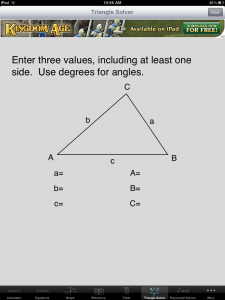Identify a CCSS-Math or a cluster of CCSS-Math and explain the following:
Introduction (describe how you will address the conceptual understanding, procedure skill, and mathematical practices related to the CCSS_Math);
Learning Progression (explain how you will use math items and activities to help students make connections between facts, concepts, procedures, and math practice to deepen their learning of mathematics); and
Conclusion (describe what teaching practices you will use to reveal the students’ thinking and skill related to the facts, concepts, procedures, and math practices).
Author: oursland
What type of involvement should math teachers have in their district’s math assessment system?
Since math instruction is tied to student math achievement through a math assessment system, discuss what type of involvement math teachers should have in this assessment system and why.
Resources for aligning district assessments with CCSS-Math
Smarter Balance Assessment Consortium
Washington State is part of an assessment consortium to develop an assessment system aligned with the Common Core State Standards. The assessments will be computer-adaptive and will be administered in grades 3-8 and 11. The summative assessments will be administered during the last 12 weeks of the school year but they are also developing formative assessments some of which are computer-adaptive and some of which are paper and pencil.
As a math education professional you are encouraged to review and participate in the development and implementation of these assessments. The pilot tests have already begun so get involved.
Illustrative Mathematics
This website is a collaborative resource for sharing and using math items aligned with the CCSSM.
Mathematics and War
Submitted by Jeremy Wright — Mathematics and War
Since war is part of the world around us, it is important for students to see that mathematics can be used to understand war. Math is used in a variety of contexts when it comes to war.
Learning through Failure in Mathematics
Submitted by Michael Jaeger — Saccheri’s great mistake
The history of mathematics is littered with long stretches of failure by bright minds to prove or disprove various propositions. Saccheri provides a great example of why we should avoid allowing our own preconceptions to distract us from deductive logic. Finally, student will be relieved to see that even the brightest minds struggle immensely.
Learning from Euler
Submitted by David Assink — Konigsberg
There are many names that dominate the world of mathematics, from Euclid to Fermat to Riemann. One name though pervades nearly every eld of study in mathematics, that of Leonhard Euler. Euler is known not only for his innovation and creativity, but also for the sheer volume of high quality work. Within this collection of work we can actually see the informal introduction of a new field of mathematics, the pre-creation if you will of graph theory. Euler, in his paper which appeared in Commentarii Academiae Scientiarum Imperialis Petropolitane, published in 1736, tackles the Bridges of Konigsberg Problem, which can be considered as \the starting point of modern graph theory.”
Use examples from a 2000 year old Chinese textbook
Aaron Young submitted — ninechapters
The current hot trend in education is using real world examples to teach students mathematical concepts. The days of memorizing tables and plugging and chugging their way through an endless supply of example problems are out of style. Even here, the Chinese have bested our discovery by over 2000 years. Originally published somewhere around 200 B.C., Jiuzhang Suanshu or Nine Chapters on the Mathematical Art, is a tour de force textbook covering a wide range of topics. Is it possible to use this 2000 year old Chinese textbook to teach modern mathematics students?
Using Video to Explain a Course Assignment
Video enhances communication by using more senses and representations of what we are trying to explain. The attached video is for a MATH 232 course. After middle level mathematics teaching candidates have completed basic exercises in logic I want to know if they can use this knowledge to teach middle level students how to use logic in their mathematics course work. This video demonstrates what I am asking the students to do and then explains the assignment that I would like them to complete.
I used iMovie to put together the video. I created the parts of the video with the screen shot features of Mac OS and created the text explanations at the beginning and end of the movie with Jing.
Visit the CESME blog and think about becoming a member
The Center for Excellence in Science and Mathematics education has a blog and encourages classroom teachers to join both the blog and center. CESME Link
Using the free ipad Graphing Calculator for triangle and polynomial practice
The free Graphing Calculator on the ipad not only is a full functioning scientific and graphing calculator but also can be used as a triangle or polynomial solving activity. As you see in the picture student can put in three parts of a triangle and the app will find the missing parts. This app can be used like a game, answer check, or as an exploration activity.
